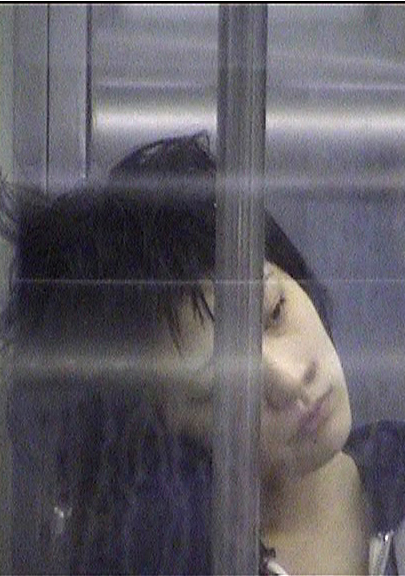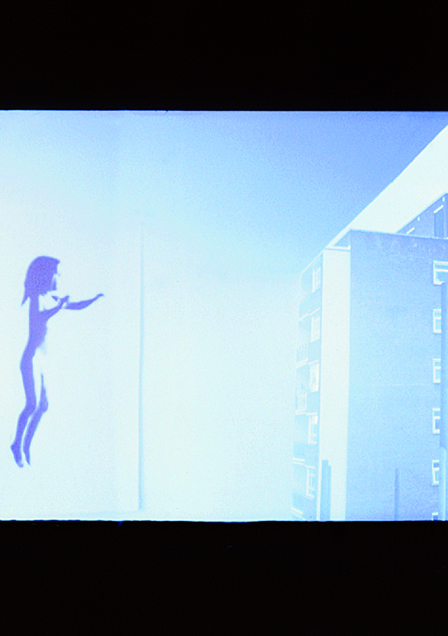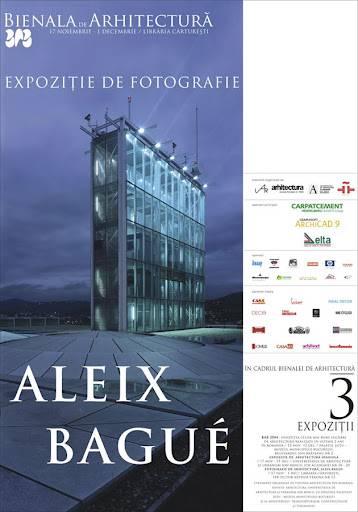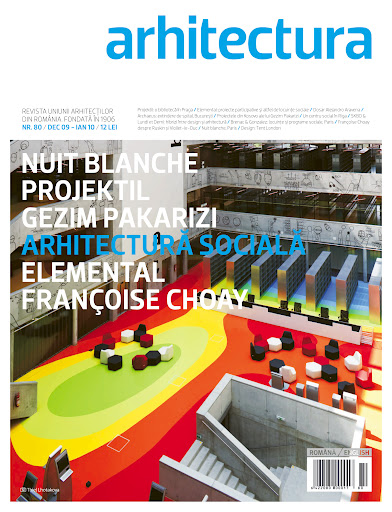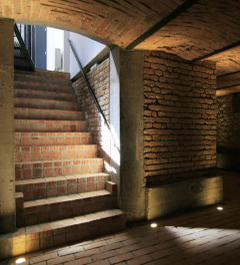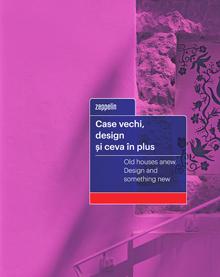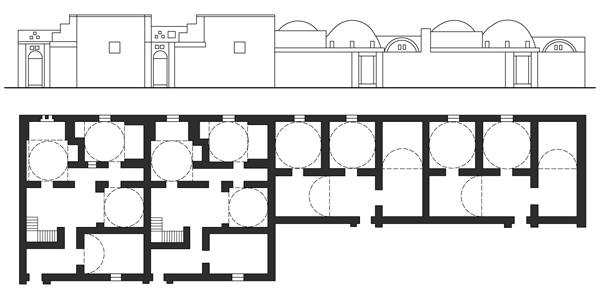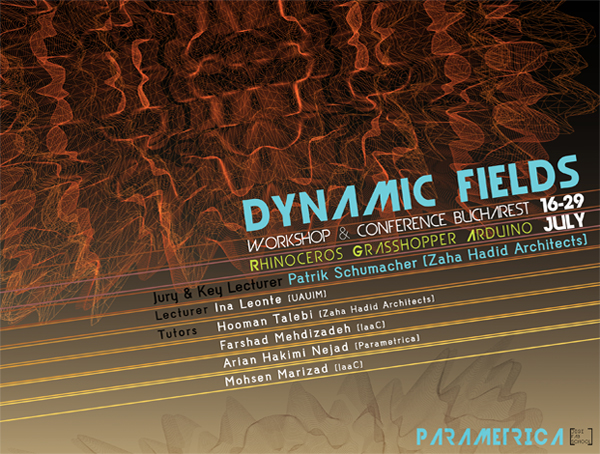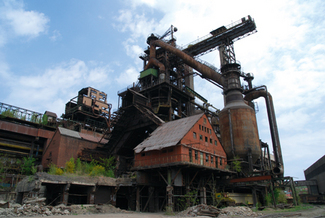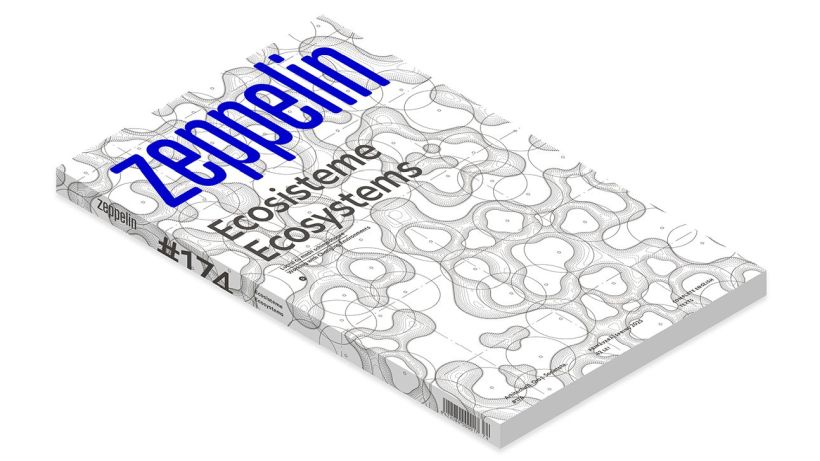screening of a film produced by Neutral ((UK)
15 and 16 September 2005, Revolution Square, Bucharest
An experimental film about the contemporary city seen as a global entity, creation of the British group, Neutral. Images shot in two different cities, London and Bombay, are combined, mixed or superimposed, common places are explored, placed in contradiction or highlighted, deliberately avoiding geographical sources and outlining a weird experience of modern living.
- Recommend on FacebookTweet about it
photography exhibition
1 – 16 September 2005, Mincu House, headquarters of the Romanian Order of Architects, BucharestIts photos, apparently colages or easily digitally completed special effects, are made with a 35 mm single-use camera, chap, easile changed, so that a a set of images, usually three, can be mixed up. By disconnecting the automatic mechanism adjusting the diaphragm and the movement of the film, Ferrary controls manually the exposure time and may connect between them the different perspectives, covering the already exposed film surface.
- Recommend on FacebookTweet about it
exhibition of architecture photography
17 November – 20 December 2004, Cărtureşti teashop, BucharestAleix Bague is one of the major Spanish photographers of architecture. The exhibition with original images was specially designed for the widest audience possible, that is why this space was selected – the teashop of Cărtureşti bookshop. Aleix Bagues’ photos are the perfect way in which those outside the profession can be attracted by architecture.
- Recommend on FacebookTweet about it
The three members of Zeppelin editorial board (Constantin Goagea, Cosmina Goagea & Ştefan Ghenciulescu) have participated to the creation of several Romanian architectural publications: the on-line magazine Virtualia, the Romanian edition of Octogon magazine, and the re-invention in 1999 of Arhitectura magazine (founded 1906) and its regular publication until 2010 (90 issues).
- Recommend on FacebookTweet about it
Design: Structural rehabilitation and restoration of the Headquarters of the District Office for Culture and National Heritage (D.C.P.N. jud. Călăraşi)
The genuine public character, the preservation of the historical substance, the refusal of the pastiche and a system of minimal interventions defined the restoration of a heritage building in Călărași.
- Recommend on FacebookTweet about it
bilingual edition [EN / RO]
To preserve all the old layers didactically, to reuse the existing substance, to appeal rather to acupuncture and to discrete novelty are some simple statements that unite the ~20 projects grouped in this volume [also selected in a homonymous exhibition]. Some examples:
* The Suceava Water Plant. Centre of Architecture, Urban Culture and Landscape (Project: Chamber of Romanian Architects, North EasternBranch)- Recommend on FacebookTweet about it
July 2006
The catalogue of the Romanian Pavilion at the Venice Architecture Biennale; the first multidisciplinary analysis (architectural, urban, sociological, anthropological and ecological) of the developments on the Romanian territory after 1989.
Authors: Constantin Goagea, Cosmina Goagea, Stefan Ghenciulescu, Justin Baroncea, Ana Bleahu
ISBN-10 973-04537-2 / ISBN-13 978-973-0-04537-6
- Recommend on FacebookTweet about it
Participationism is a historiographical construct inspired by mid 1960s’ anthropology and social theories. About twenty years before theorizing, by 1945, Hassan Fathy was testing “participationism” within New Gourna project in Luxor, Egypt. The situation was unique: the Egyptian Department of Antiquities was relocating the local population from the endangered area containing ancient ruins, trying to reintegrate people into sustainable tourism circuit through craft activities that they could undertake. To imagine a new fragment of the village, Fathy relied on timeless images of vernacular architecture made out of earth and adobe, i.e. a technology considered “primitive” by locals who actually wanted a “modern” built environment made of new materials available on the Egyptian market at that time. The architect tried to make people rediscover and reinterpret existing typologies and constructive traditions in a natural way. The “owner-architect-craftsman” triad represented the backbone of its social approach. In terms of space, the space room / cell of the space-structure articulated the entire built tissue.
- Recommend on FacebookTweet about it
Parametrica [Digi Fab School] from Bucharest, Romania, invites you to DYNAMIC FIELDS Workshop and Conference (16-29 July 2013) to participate in the digital design build project, seeking to create an inventive collaborative environment. The workshop is part of a series of PARAMETRICA events, promoting computational design thinking and exploring the new possibilities of parametric design.
The workshop is aimed at: students, postgraduates, architects, interior, product and urban designers, engineers, anybody interested.
- Recommend on FacebookTweet about itPost de: Irina Ioana Iamandescu
In 2005, Mircea Cartarescu wrote beautifully and sadly: “a strictly personal drama: they’ve pulled down my mill! Who did it? No idea. What mill? My mill, “Dambovita” mill behind the block on Stefan cel Mare [Boulevard] where I lived for 25 years and where my folks still live. The mill in “Nostalgia” and “Orbitor”, the mill at whose shadow Mendebil would tell his fantastic stories. The mill which dominates my dreams, as huge as all mausoleums and docks of the world would have been placed together. The construction with a most impressive industrial architecture in the world.
- Recommend on FacebookThis website uses cookies to improve your experience. We'll assume you're ok with this, but you can opt-out if you wish.Accept Read MorePrivacy & Cookies Policy
Privacy Overview
This website uses cookies to improve your experience while you navigate through the website. Out of these, the cookies that are categorized as necessary are stored on your browser as they are essential for the working of basic functionalities of the website. We also use third-party cookies that help us analyze and understand how you use this website. These cookies will be stored in your browser only with your consent. You also have the option to opt-out of these cookies. But opting out of some of these cookies may affect your browsing experience.Necessary cookies are absolutely essential for the website to function properly. This category only includes cookies that ensures basic functionalities and security features of the website. These cookies do not store any personal information.Any cookies that may not be particularly necessary for the website to function and is used specifically to collect user personal data via analytics, ads, other embedded contents are termed as non-necessary cookies. It is mandatory to procure user consent prior to running these cookies on your website.

